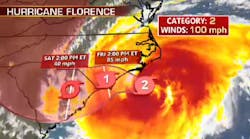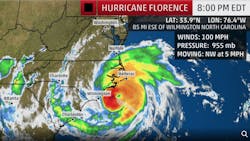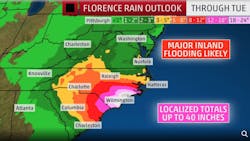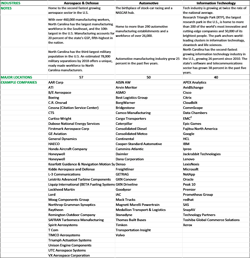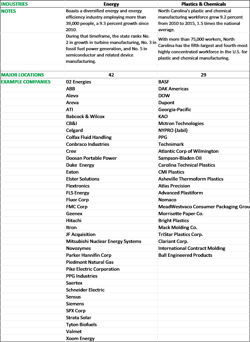Human and economic impacts of Hurricane Florence. It is important to emphasize upfront that the primary concern with a natural disaster is for the lives of the people impacted and their homes and businesses. The coming days will be daunting for the 10 million people in the path of Hurricane Florence. Unfortunately, based on past experience and expectations for weather patterns, the effects of the hurricane will be felt for days and weeks, and the time for recovery and cleanup will likely take months.
However, it is also necessary to understand the potential economic impact of the storm, as well as the steps companies will need to take in order to weather the direct and indirect impact on their industries and supply chains.
1. Florence makes landfall as a Category 1 hurricane.
U.S. Secretary of Commerce Wilbur Ross tried to ease fears regarding the economic impact of the hurricane while noting specific sectors could be hit harder. “Overall, it’s not going to move the national economy,” he noted. “We have an $18 trillion economy, so 1% of $18 trillion would be $180 billion. That’s a pretty big number.”
Ross also acknowledged that the hurricane “could hinder the shipping industry, affecting imports and exports because vessels will likely remain on the water longer, thus raising transportation costs. Hundreds of ships are already marooned offshore, delaying the time it takes getting goods ports and businesses.”
While dramatic footage of the wind and storm surge at the coast will capture news headlines, it is also predicted that the slow-moving storm will dump large amounts of rain across the region, triggering widespread flooding. This means even companies farther inland will be impacted as businesses and their employees work to cope with flooding, lost power, damaged infrastructure, etc.
Consequently, the partners of these companies will need to implement contingency plans both to support the companies harmed by the hurricane and buffer their customers from potential supply chain disruptions. Given the increasing frequency of natural disasters impacting global supply chains, it is hoped that companies have learned from previous disasters and already created plans that can be implemented at this time.
2. Florence rains likely to trigger widespread floods.
The Carolinas represent an important sector in the manufacturing economy. Previous disasters have focused attention on the electronics supply chain when they hit areas such as Japan, Thailand, and other areas. The energy industry, by contrast, was bruised by Hurricane Harvey when it hit Houston. In the case of North and South Carolina, a broad swath of the manufacturing industry will experience varying levels of challenges.
Tables 1 and 2 have been prepared to provide a snapshot of the large manufacturing presence in this region and companies that may suffer difficulties from the storm. These two states will likely take brunt of the storm. However, Georgia and Virginia will also feel its effects. While these tables are not comprehensive, they do provide a big-picture view; this should help as companies anticipate steps they will need to take to manage through the inevitable period of crisis and uncertainty that will follow Hurricane Florence.
A manufacturing industry snapshot of North Carolina.
A manufacturing industry snapshot of South Carolina.
